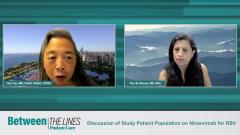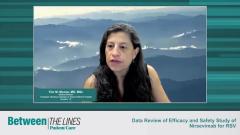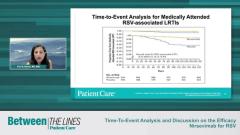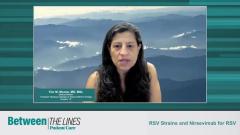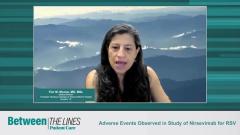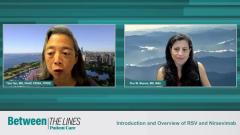
Time-To-Event Analysis and Discussion on the Efficacy Nirsevimab for RSV
Flor M. Munoz, MD, MSc, and Tina Tan, MD, FAAP, FIDSA, FPIDS, continue their discussion on the results of nirsevimab for Respiratory Syncytial Virus (RSV) and offer insights on how this may change therapeutic approaches in the future.
Episodes in this series

Transcript
Flor M. Munoz, MD, MSc: Right. This is a very nice graph. I think that importantly, you do see a differential in the occurrence of the events which have respiratory illnesses, lower respiratory tract illnesses that are associated with RSV, especially after about 20 or so days, and that you see a more obvious difference between the vaccinated and the placebo group, especially in the first 90 days. But that differential continues until 150 days, as that was one of the goals indicated. It is doing what it was expected to do, knowing the half-life and the potential duration of protection up to 150 days for these babies. I would comment briefly [on] the age that you mentioned, most of these babies would have received this intervention any time from almost their birth to several months later, but the majority can receive it at about 2 and a half months of life. I think this is also important to keep in mind because we would have a higher risk in those first 3 months of life as well. It’s important to give as much protection for the longest time by administering this intervention earlier in life.
Tina Tan, MD, FAAP, FIDSA, FPIDS: I think the other important thing to point out, too, is this is just a single injection of the nirsevimab as opposed to the palivizumab, which we currently use, which sometimes [consists of] multiple infusions to protect the very, very preterm infant. I think this also is an asset for this particular monoclonal [antibody] in that we see that the protection is extended after just a single dose of it.
Flor M. Munoz, MD, MSc: Correct. And indeed, I think this is the kind of differential one would like to see with still maybe a little bit of a time needed for the antibody to have its effect, right? It would be optimal to be able to administer this before RSV season begins or as soon as RSV season begins because otherwise the opportunities for exposure for these babies would increase as the season progresses and the duration of the protection at its peak would be optimal when RSV is again circulating at its peak.
Tina Tan, MD, FAAP, FIDSA, FPIDS: Yeah, I completely agree.
Transcript is AI-generated and edited for clarity.
Newsletter
Enhance your clinical practice with the Patient Care newsletter, offering the latest evidence-based guidelines, diagnostic insights, and treatment strategies for primary care physicians.



